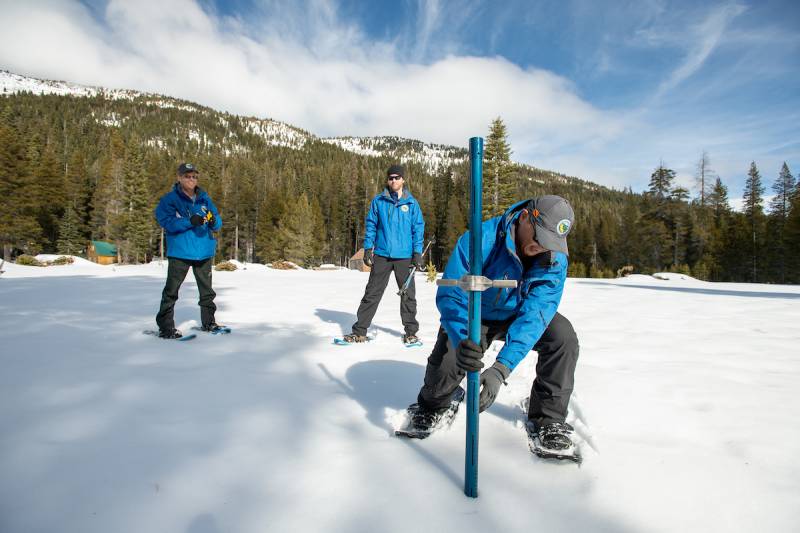State water officials say the snowpack near Lake Tahoe is 79 percent of the historical average for this time of year.
The California Department of Water Resources conducted the second monthly snow survey of the year Thursday morning at Phillips Station snow course in the Sierra Nevada, south of Lake Tahoe.
It’s one of 260 stations that measures snowpack statewide.
Snowpack across the state is averaging 72 percent of what’s normal for the start of February.
DWR’s Jan. 2 snow survey tracked the Sierra snowpack at close to average for the beginning of the year. But California experienced a dry January that slowed the accumulation of snowpack.
“In comparison to where we were just a month ago … snow and precipitation statewide were well below average,” said Sean de Guzman, chief of DWR’s Snow Surveys and Water Supply Forecasting Section.
